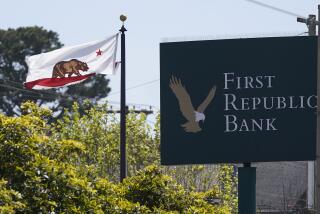THE DAIWA DEBACLE : Spate of Market Upsets Follows Familiar Script
- Share via
NEW YORK — In early 1994, a senior executive at Bank of America warned a Federal Reserve Bank of Atlanta conference that he expected to see a $1-billion trading loss at some point in the future.
The big surprise, 2 1/2 years later, is that he was too conservative in his prediction. Since then, the financial markets have had bigger upsets than even he imagined--crushing losses involving the German company Metallgesellschaft, the U.S. brokerage firm Kidder Peabody & Co., the municipal authority of Orange County, venerable British firm Barings Bank and now Japan’s Daiwa Bank Ltd.
In each case, events followed a familiar script:
A huge loss was announced. A “rogue” trader was blamed. His supervisors disclaimed responsibility. The auditors and regulators did the same. Government launched an investigation. And analysts bemoaned the lack of controls that led to the problem.
What rarely gets explained amid the massive finger-pointing is why big financial institutions keep having these problems, and what makes the trading of financial assets so tricky. The particulars are different in every case, but they tend to involve one or more of the following factors:
Financial traders are allowed a great deal of freedom to manage their positions in the ordinary course of business. Too much discipline seems to depress the necessary animal spirits of traders. So the business is inevitably chaotic.
Bean counters often have little political clout inside the firms compared to the revenue-producing trading desks.
When a trader reports apparently good results, few colleagues are eager to antagonize him by taking a close look at trades.
And the increasing complexity of customized financial instruments has increased the amount of camouflage a rogue trader can throw over a large losing position if so inclined, said Paul Isaac, a former Wall Street bond trader.
More to Read
Inside the business of entertainment
The Wide Shot brings you news, analysis and insights on everything from streaming wars to production — and what it all means for the future.
You may occasionally receive promotional content from the Los Angeles Times.










